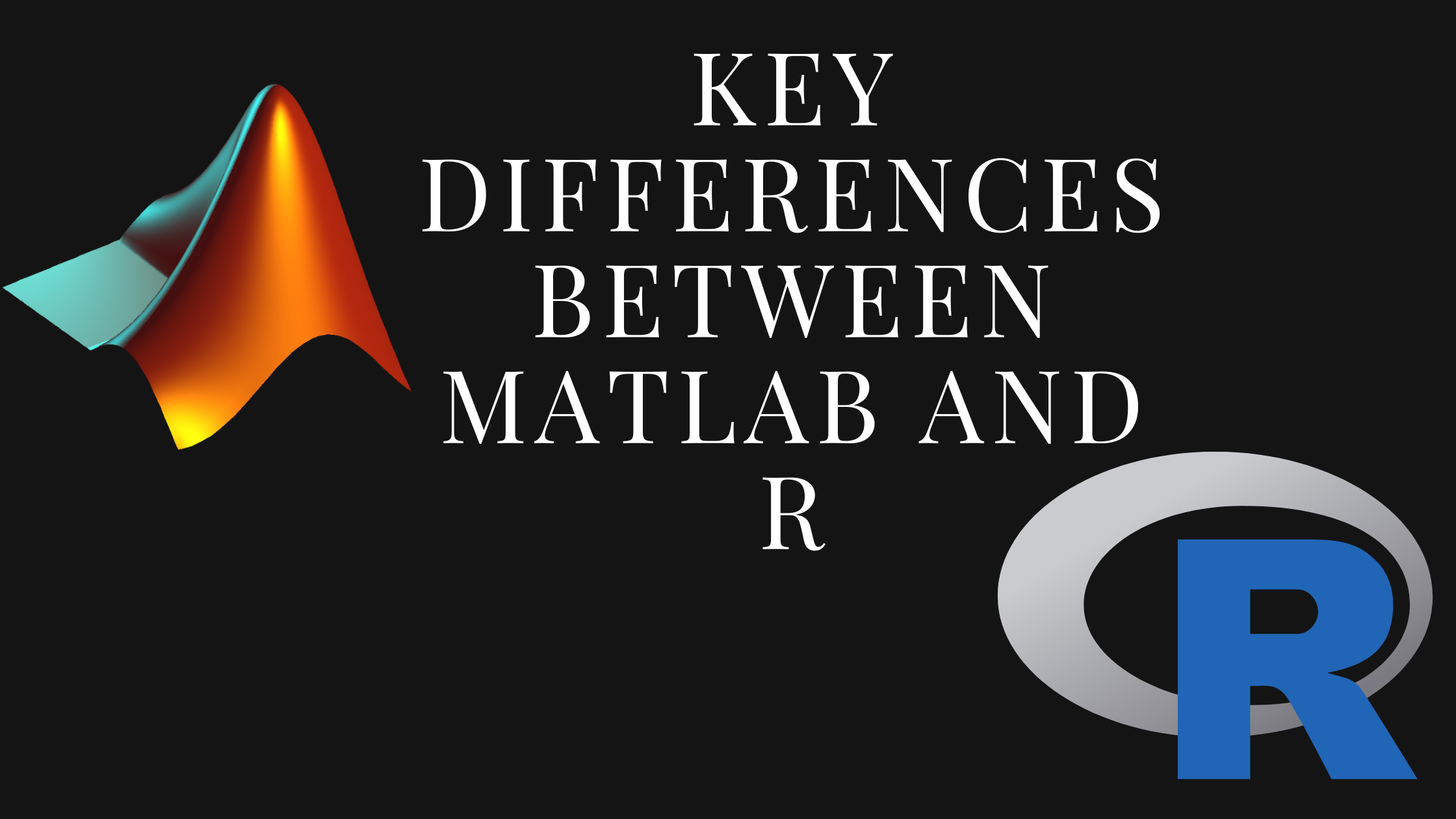Matlab is used to handle various other mathematical disciplines, such as calculus, graph design, matrix manipulation, signal processing, etc. Since it is used to address statistically-related problems and has many pre-packaged apps that do the same, R is chosen over Matlab in the field of analytics. R is a popular and useful open source programming language for statistical computing and graphics. Time series analysis, linear and nonlinear modelling, machine learning algorithms, and conventional statistical tests are only a few of the statistical techniques that R uses. R consists of a language and a run-time environment with support for script execution, graphics, a debugger, and access to various system functions.
The dedicated programming language MATLAB is available to engineers and scientists.
Computers with maths and technology. In the desktop context, computational mathematics, such as signal and image processing, data analytics, and linear algebra, can be expressed naturally. A characteristic of MATLAB is toolboxes, an application-specific solution. Toolboxes provide a selection of M-files, or MATLAB routines, that deal with a particular set of problems. Numerous specialties, including deep learning, neural networks, control systems, and digital signal processing, have toolboxes available.
R vs MATLAB:
Given that both R and MATLAB are programming languages used by the same user base and both offer access to mathematical and statistical functions, you could conclude from a cursory reading of them that they are extremely comparable. However, if you compare a few important factors, you might find a different outcome.
Simple to learn:
R has an extremely steep learning curve. Since R was developed by statisticians, programming knowledge is necessary to use all of its features. There was no GUI to help non-programmers perform the analysis. R's working examples are challenging and not appropriate for beginners. The new R-Commander, R-Studio, and GUI versions have helped the development community.
R is more difficult to learn and remember than MATLAB, which is a language that is simple and consistent across products by design.
Cost R is an open source tool, it is free. However, MATLAB has a license charge that varies depending on usage, and the fee is fixed. MATLAB is a programming language developed by Mathworks.
Performance:
For specialised computer tasks like statistics and machine learning, R is slower than MATLAB. A proficient R developer, however, can speed up production and improve performance.
Functionalities:
While MATLAB is used for many different applications, including image processing, matrix manipulation, machine learning, and signal processing, R is mostly used for data analysis.
Assurance and Support:
R has a strong developer community that offers support and documentation because it is an open source language. However, the work of MathWorks is exceptional and excellent for MATLAB documentation. The documentation, which is fully searchable both online and from inside the MATLAB desktop, contains hundreds of code examples. Due to its distinctiveness, MATLAB has a lively community and over 200 international technical support specialists who are committed to problem-solving.
Learning Machines:
Both MATLAB and R are effective machine learning programs. You can explore data interactively, select features, create validation schemes, train models, and assess results using the Statistics and Machine Learning Toolboxes in both MATLAB and R. These toolboxes offer a classification application. R provides a broad library selection. Your decision will be influenced by your objectives. MATLAB is the ideal choice if processing images is one of your assignments. However, if you want to use statistical methods for intricate algorithms, R would be your best bet.
Visualisation:
Strong data export and visualisation capabilities are offered by both R and MATLAB. Four exciting and unique graphics implementations are available in R: Base graphics, Grid graphics, lattice graphics, and ggplot2. The default and most approachable of the four graphics systems is R's base graphics system.
The use of GUI programming capabilities in programs is also enabled by MATLAB. MATLAB's graphics features include 2D and 3D charting tools that enable interactive and programmatic customization of graphs. Simulink, a MATLAB add-on software, is a graphical programming environment used for modelling, simulating, and analysing multi-domain dynamical systems. The primary user interface for Simulink consists of a graphical block diagramming tool and a number of customisable block libraries.
Operating System (OS) R is compatible with the three most widely used consumer operating systems (OS): Linux, Mac, and Windows, as well as the server-oriented Solaris OS. Since R is largely platform-independent, it ought to function identically on each of these platforms. CRAN tests, which ensure that R packages are compatible with all of the aforementioned OSs, contribute to this.
Furthermore, MATLAB is supported by Windows, Mac, and Linux. It's interesting to note that MATLAB licensing uses a computer's MAC address to identify the licenced machine. Since it is a hardware characteristic, the MAC address is constant among operating systems installed on the same device. Therefore, installing MATLAB on several operating systems running on the same physical computer just requires one activation.
So which is superior, MATLAB or R?
The government, hospitals, and educational institutions all like R very much. MATLAB is commonly used by businesses, academic institutions, and research facilities. It is frequently employed in the aerospace and aviation industries.
As a statistical programming language, R provides a wide range of straightforward basic statistical processes, making it a great place to start. As we have seen, both are strong in the areas in which they excel. The default Integrated Development Environment (IDE) for R users, R-Studio, allows users to see the documentation and write code at the same time.
It uses mathematical computations since MATLAB is the easiest mathematical software to comprehend and program. Therefore, your decision to choose MATLAB or R depends on your level of programming knowledge and experience.
Conclusion:
Along with statistics, Matlab provides a framework for machine learning. A substantial number of machine learning libraries are available in R. Matlab provides facilities for 2D and 3D charting with a graphical user interface. R offers four different graphic implementations: basic graphics, grid graphics, lattice graphics, and Ggplot2.
